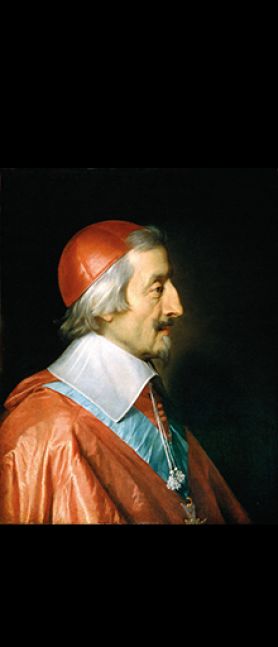Portrait of Cardinal Richelieu

Champaigne preferred a Parisian career to working in Ruben’s studio. He served amongst others Marie de Medici and then later on her son, Louis the 13th. He is mainly remembered as the chief painter of the Minister of Louis the 13ths, the famous Cardinal Richelieu, who was immortalised by Alexandre Dumas in his work “The Three Musketeers”.
Take a close look at this portrait. Note the precision of each detail: the hair of the cardinal’s beard, the Cordon of the Order of the Holy Spirit - the most important distinction in seventeenth-century France - that Richelieu wears on his clothing...
And this symphony of reds playing with blacks is just sumptuous.
Champaigne was an accomplished colourist. His meticulous Flemish background took naturalism to the highest degree of perfection.
The aristocratic ambitions of Richelieu gave him a tendency to travel, to make war, but also to gallantry. The psychological truth of the character is perfectly rendered here. His arrogance is palpable. The tapered profile, framed to show only the bust, is reminiscent of Julius Caesar’s face on a coin.
Champaigne also represented the Cardinal’s face on the same canvas. This double portrait was to be sent to Rome to enable the making of a marble bust. But then the painting got cut and only the profile was retained.
Richelieu appreciated Champaigne so much that he made him beautify all his portraits painted previously by other artists. As a savvy politician, he knew the value of enhancing and controlling his image.
